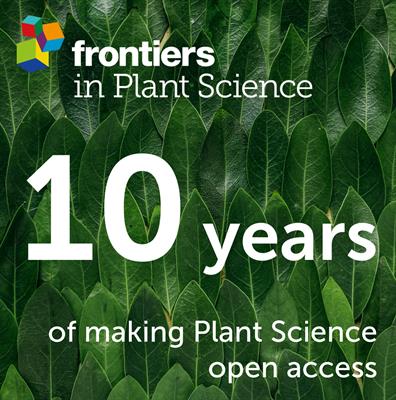Application of Asteraceae biomass and biofertilizers to improve potato crop health by controlling black scurf disease
IF 4.1
2区 生物学
Q1 PLANT SCIENCES
引用次数: 0
Abstract
Potato (应用菊科生物质和生物肥料,通过控制黑孢病改善马铃薯作物的健康状况
巴基斯坦的马铃薯(Solanum tuberosum L.)种植面临挑战,其中由根瘤菌(Rhizoctonia solani Kühn)引起的黑皮病是一个重大问题。化学杀菌剂等传统方法可以部分控制这种病害,但缺乏有效的解决方案。本研究探讨了利用菊科杂草生物质制成的生物肥料和土壤改良剂来控制该病的潜力。研究人员选择了两个马铃薯品种--卡洛达和桑特,并对两种生物肥料--Fertibio 和丰收进行了单独或与黄花菜生物质一起使用的测试。阳性对照中的病害压力最大,而化学杀菌剂能显著降低病害压力。X. strumarium 生物质也能显著降低病害发生率。Fertibio 的药效优于丰收。施用生物肥和生物质后,植物的生理和生化属性得到改善。块茎重量、光合色素、总蛋白含量和抗氧化酶(CAT、POX 和 PPO)呈正相关。联合施用 Fertibio 和 S. marianum 生物质可有效控制黑枯萎病。这些生态友好型替代品可提高病害管理水平和产量。未来的研究应探索其成本效益、商业化和安全性。
本文章由计算机程序翻译,如有差异,请以英文原文为准。
求助全文
约1分钟内获得全文
求助全文
来源期刊

Frontiers in Plant Science
PLANT SCIENCES-
CiteScore
7.30
自引率
14.30%
发文量
4844
审稿时长
14 weeks
期刊介绍:
In an ever changing world, plant science is of the utmost importance for securing the future well-being of humankind. Plants provide oxygen, food, feed, fibers, and building materials. In addition, they are a diverse source of industrial and pharmaceutical chemicals. Plants are centrally important to the health of ecosystems, and their understanding is critical for learning how to manage and maintain a sustainable biosphere. Plant science is extremely interdisciplinary, reaching from agricultural science to paleobotany, and molecular physiology to ecology. It uses the latest developments in computer science, optics, molecular biology and genomics to address challenges in model systems, agricultural crops, and ecosystems. Plant science research inquires into the form, function, development, diversity, reproduction, evolution and uses of both higher and lower plants and their interactions with other organisms throughout the biosphere. Frontiers in Plant Science welcomes outstanding contributions in any field of plant science from basic to applied research, from organismal to molecular studies, from single plant analysis to studies of populations and whole ecosystems, and from molecular to biophysical to computational approaches.
Frontiers in Plant Science publishes articles on the most outstanding discoveries across a wide research spectrum of Plant Science. The mission of Frontiers in Plant Science is to bring all relevant Plant Science areas together on a single platform.
 求助内容:
求助内容: 应助结果提醒方式:
应助结果提醒方式:


